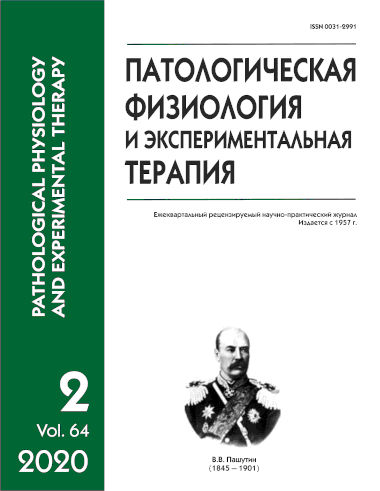Correction of the the liver morpho-functional state with stem cells in acute hepatitis
Abstract
The aim of the work was studying the effect of combined transplantation of multipotent mesenchymal stromal and hematopoietic stem cells on regeneration of the liver under the physiological conditions and in toxic hepatitis. Methods. Experiments were performed on 84 white laboratory male mice aged 7-8 months. Toxic hepatitis was induced by administration of carbon tetrachloride (CCl4) at a dose of 50 µg/kg, i.p. Mice were divided into experimental and control groups. The experimental group received caudal vein injections of multipotent mesenchymal stromal (MMSC) and hematopoietic stem cells (HSC) derived from the placenta chorion of female mice at respective doses of 4M cells/kg and 330K cells/kg suspended in 0.2 ml of 0.9% NaCl. Control animals were given 0.2 ml of 0.9 % NaCl, i.v. Intravenous injections were performed once 1 hour following the administration of carbon tetrachloride. MMSCs of the third passage were used for transplantation, while transplanted HSCs were not cultured. Effects of the combined MMSC and HSC transplantation on blood biochemistry and liver morphometry were studied under the physiological conditions and at 1, 3, and 7 days after administration of CCl4. Results. In toxic hepatitis, the combined transplantation of multipotent mesenchymal stromal and hematopoietic stem cells resulted in decreased activity of cytolytic enzymes, activation of hepatic protein synthesis, increased number of hepatocytes, and increased mitotic activity indicative of activation of intracellular regeneration. Increases in the number of binuclear hepatocytes, nucleus size, and the nuclear-cytoplasmic ratio suggested an enhancement of intracellular regeneration in the liver.






